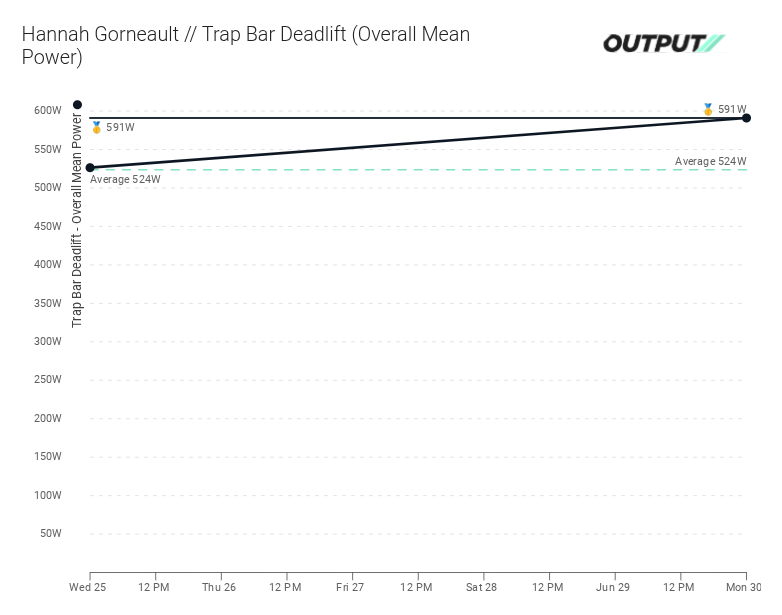Strength and Power Without Maxing Out: Why VBT Is a Game Changer
- James Walsh

- Jul 23
- 3 min read
At Ground Force, we don't chase numbers—we build them through intent, velocity, and precision. Over the past few months, athletes like Hannah Gorneault and Aiden King have demonstrated measurable increases in both strength and power using a system that doesn't rely on 1RM testing or excessive fatigue. Instead, we lean into Velocity-Based Training (VBT) and low-rep, high-intent protocols that enhance performance and minimize risk.
Velocity-Based Training is a modern performance method that uses bar speed or movement velocity to guide load, volume, and intent. Rather than programming based on arbitrary percentages of a tested 1RM (which can fluctuate daily), we use live feedback to ensure athletes are training at the right intensity for their goals and readiness.
Why it works:
Trains with purpose, not fatigue
Adjusts to daily readiness and recovery
Enhances Rate of Force Development (RFD)
Improves neural efficiency
Reduces burnout and overuse injuries
By training with speed and intent, athletes don’t just get stronger—they get faster, more explosive, and more resilient.
Over the course of her training, Hannah demonstrated clear improvements in both estimated strength and power output in the trap bar deadlift—achieved without ever performing a true max-out set.

Trap Bar Deadlift Metrics:
Metric | Average Value | Peak Value |
Estimated 1RM | 91.35 kg | 97.87 kg |
Mean Power Output | 524 watts | 591 watts |
By using a combination of bar speed and submaximal loads, we targeted her performance zones for strength and power. Her estimated 1RM climbed steadily without risk, and her mean power output increased—indicating more efficient, forceful movement.

Aiden’s progress provides a great example of how VBT also improves neuromuscular efficiency and balance between limbs—key for sprinting, deceleration, and injury prevention.
Performance Metrics:
Test | Initial Value | Most Recent |
RSI (10-5 Test) | ~1.18 | 1.271 |
Split Squat Mean Velocity (Left) | 1.1 m/s | 1.27 m/s |
Split Squat Mean Velocity (Right) | 1.2 m/s | 1.2 m/s |
Aiden showed an increase in Reactive Strength Index (RSI), reflecting improved elastic qualities and plyometric efficiency. More notably, his previously weaker leg (left) surpassed his right in split squat velocity. This kind of unilateral development is crucial in soccer and other multidirectional sports, where asymmetry often leads to movement compensations and injury risk.
In many weight rooms, athletes are still pushed toward fatigue-based lifting cycles and outdated percentage-based programming. While this can develop strength, it often sacrifices recovery, movement quality, and transfer to sport.
Our system focuses on:
High-speed, low-rep strength work
Load selection based on bar velocity, not estimated maxes
Individualized adjustments based on daily readiness
Unilateral power development and movement symmetry
Consistent performance feedback without physical burnout
This is how we get stronger, faster, and more efficient—without unnecessary risk or wasted time under the bar.
At Ground Force, our commitment to performance extends beyond the session. Through our proprietary Perform First app, we track key performance metrics like bar speed, power output, and readiness indicators for every athlete we work with. This allows us to deliver precise programming while helping athletes and coaches visualize real-time progress.
Whether you're a competitive athlete or a parent looking to keep your child healthy and prepared, VBT offers a smarter, safer, and more effective way to train. It's not about lifting the most weight—it's about producing the most force in the shortest amount of time. And that’s exactly what translates to the field.
Train smarter. Move faster. Perform first.
If you're ready for a change and want to key insights to your training schedule your consultation below





Comments